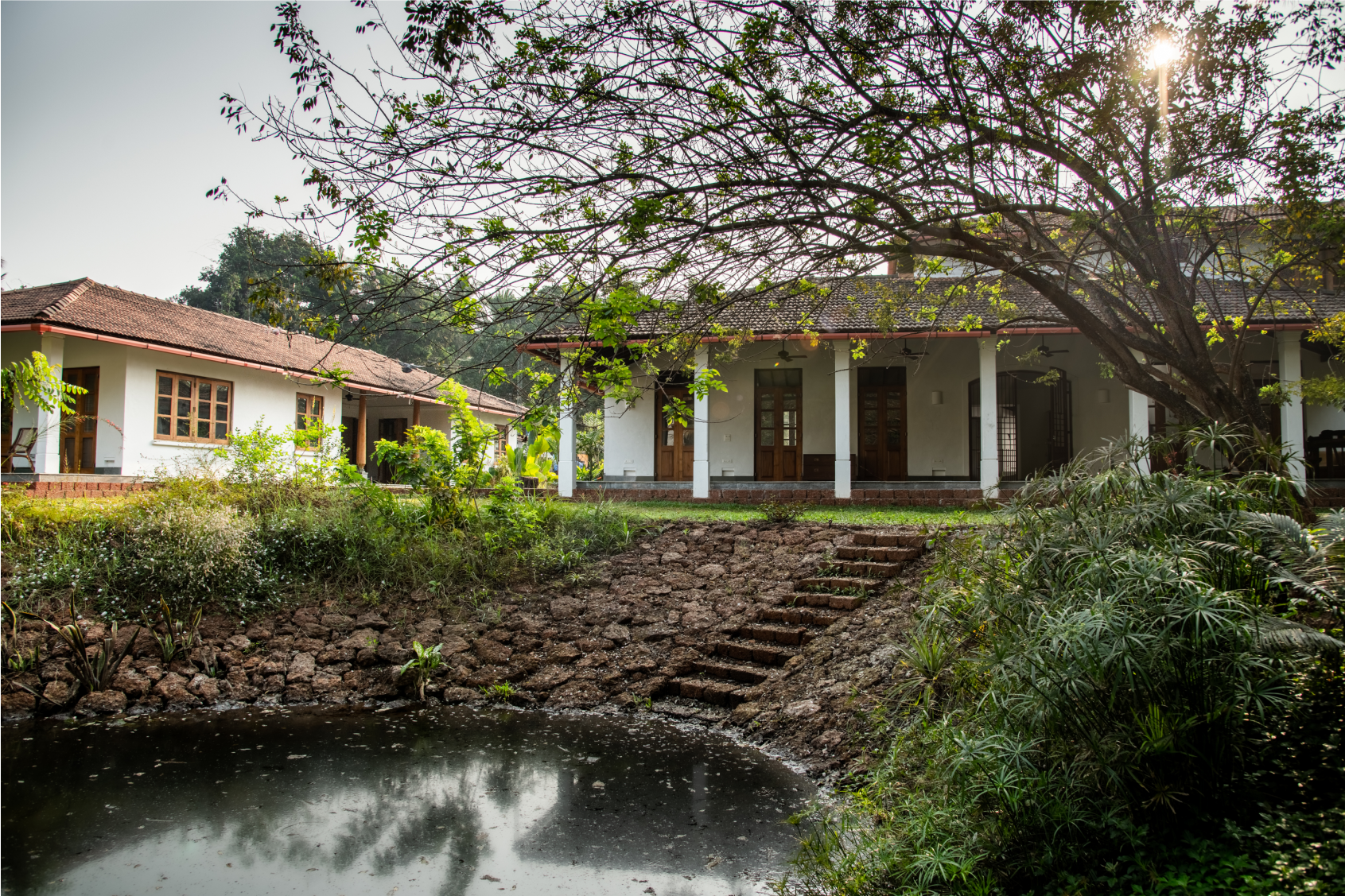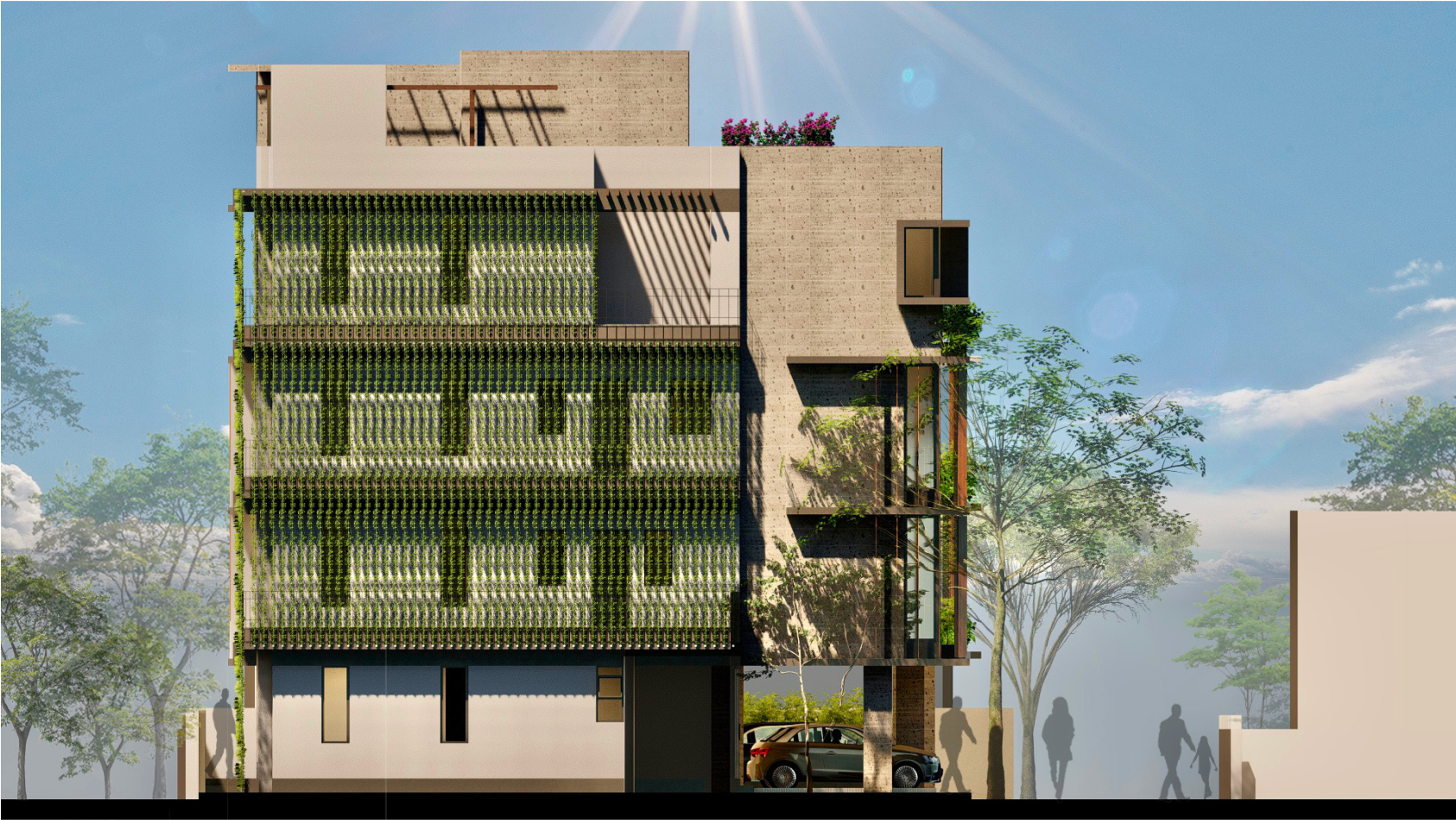Can Architecture Heal the Planet?
In the first episode, we explore how Grounded, a Goa-based architecture practice, champions building ecologically sustainable structures without disrupting nature’s balance.
The act of building is inherently at odds with nature. It consumes resources and destroys natural ecosystems that have taken centuries to evolve. However, with eight billion people on the planet — and counting — humans must and will continue to build. So how must we build?

Founder & Principal Architect Anjali Mangalgiri
Anjali Mangalgiri addresses this through her ecologically sensitive architecture practice, Grounded, which she founded in 2010 in Goa. The practice goes beyond creating architecture that reconnects with nature and aims to replenish the natural ecosystems of the land it sits on. Grounded practices an alternate business model, where the architectural team is the project’s architect and property developer. This allows the team to indulge authentically in the spirit of sustainability.
One of the main environmental considerations that underlines Grounded’s work is the preservation of topsoil; when breaking ground on a greenfield site, this soil is reused in the site’s landscaping.
Significant works
Navovado, Goa

Image Courtesy of Sanjeet Wahi and Grounded
A contemporary house that fits into the Goan village landscape, Navovado is designed to preserve the site’s preexisting natural systems. The biggest challenge that the design of the home tackles is the availability of water throughout the year.
Though the house is located close to paddy fields — which should mean a high underground water table — a well revealed the levels to be critically low. Measures such as roof runoff collection and permeable pavers have helped recharge the groundwater. Under a year, the well’s water levels have increased by three metres during the monsoon, eradicating the need for a water tanker — a common sight in most Goa homes today.
House With Three Pavilions, Goa

Image Courtesy of Sanjeet Wahi and Grounded
This luxury house in Mandrem, Goa, is designed to morph into the surrounding landscape. No tree on the site was cut during the process, and the structure hugs the ground, respecting the sloping topography.
A depression in the centre of the plot was identified as a natural collection point for rainwater and leveraged as the base for the site’s wetland ecosystem. The biodiversity this pond attracted became a pivotal point of the project's design philosophy; efforts were made to preserve this ecosystem while human habitation was inserted around it.
Moreover, since the pond overflowed with the rainwater it seasonally receives, a second pond was designed with a network of bioswales to help the excess water get absorbed into the ground, which also helped create a habitat for the local biodiversity.
Anaha, Chennai

Image Courtesy of Grounded
Recently, Grounded has expanded its base to Chennai, exploring the same principles of sustainability at scale in a dense urban context.
Anaha is a four-storey luxury residential building designed to be biophilic and envisioned as an oasis against the increasingly hotter Chennai climate. Green screens wrap around the building, providing access to nature at all levels and letting in filtered light and air.






